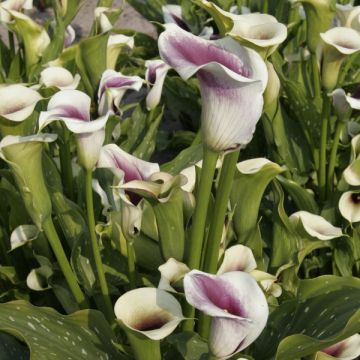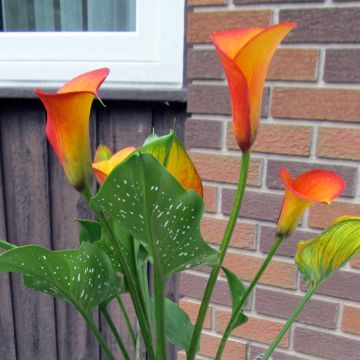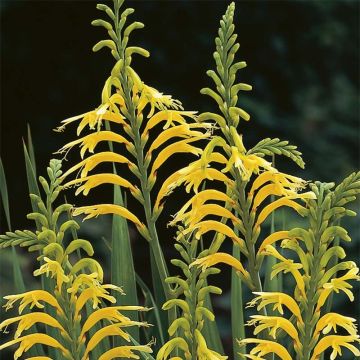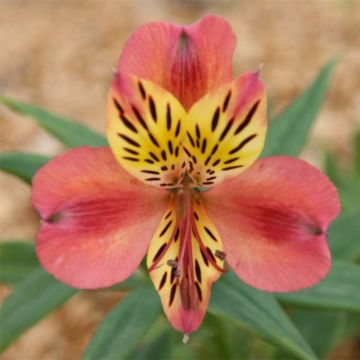

Arum ou Calla à fleurs rose tendre teinté de blanc - Zantedeschia Captain Marrero
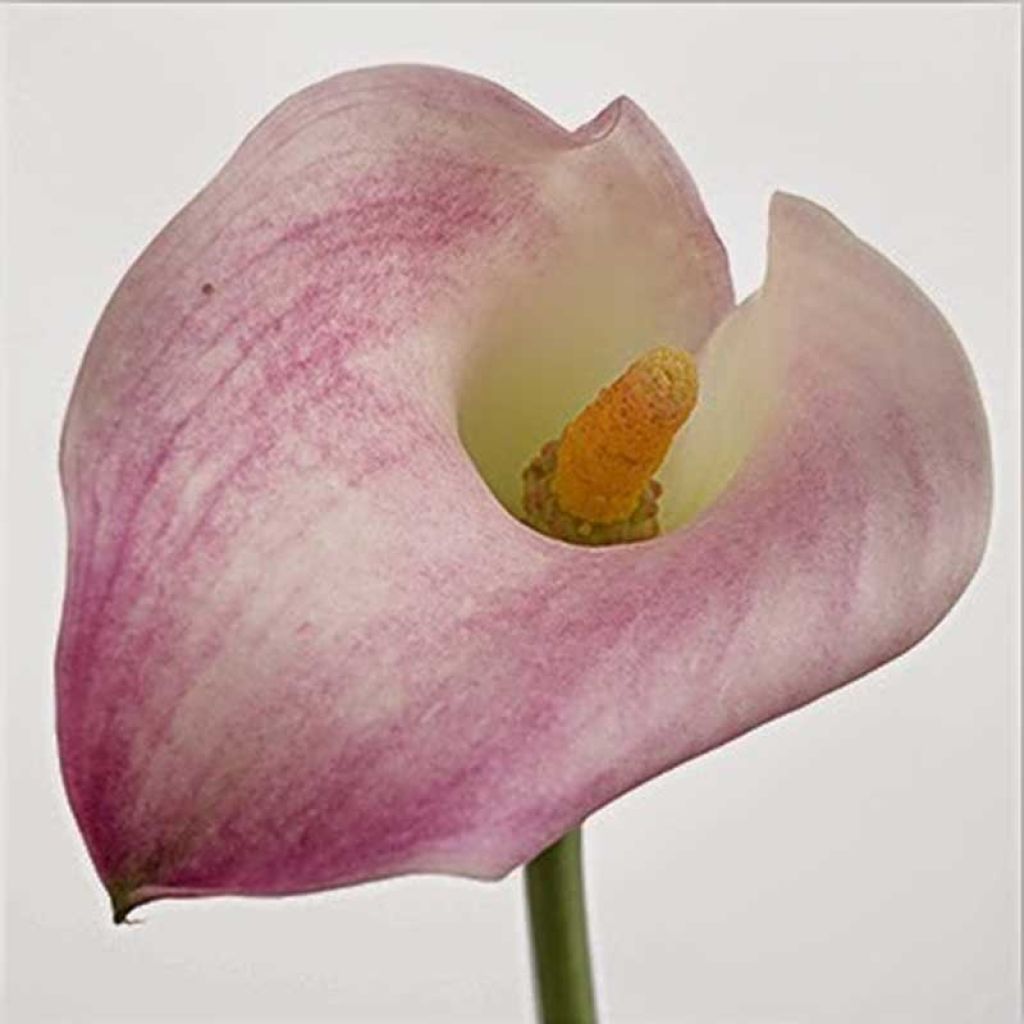

Arum ou Calla à fleurs rose tendre teinté de blanc - Zantedeschia Captain Marrero
Zantedeschia elliottiana Captain Marrero - Calla Lily
Zantedeschia x elliottiana Captain Marrero
Golden Calla Lily, Yellow Calla Lily
Special offer!
Receive a €20 voucher for any order over €90 (excluding delivery costs, credit notes, and plastic-free options)!
1- Add your favorite plants to your cart.
2- Once you have reached €90, confirm your order (you can even choose the delivery date!).
3- As soon as your order is shipped, you will receive an email containing your voucher code, valid for 3 months (90 days).
Your voucher is unique and can only be used once, for any order with a minimum value of €20, excluding delivery costs.
Can be combined with other current offers, non-divisible and non-refundable.
Why not try an alternative variety in stock?
View all →This plant carries a 6 months recovery warranty
More information
We guarantee the quality of our plants for a full growing cycle, and will replace at our expense any plant that fails to recover under normal climatic and planting conditions.
Would this plant suit my garden?
Set up your Plantfit profile →
Description
The Arum or Calla 'Captain Marrero', also known as Zantedeschia, stands out for its flowering with delicate pale pink spathes washed with white. This hybrid Arum is a tuberous perennial that bears an upright clump of large sagittate leaves, dark green with a slight white marbling. Its flowers continuously bloom from May to August and last a long time in bouquets. It is frost-tender and needs to be overwintered outside of warm climate regions, making it suitable for pot cultivation. This plant requires a light, rich, and moist soil, as well as a bright but not scorching exposure.
Zantedeschia 'Captain Marrero' is one of the many hybrids obtained by cross-breeding two main species native to Eastern and Southern Africa, Zantedeschia rehmannii and Zantedeschia elliottiana. 'Captain Marrero' is a stemless species with large sagittate leaves, dark green with white speckles. It can grow quite tall, reaching about 60cm (24in) in height and 40cm (16in) in width. Like other hybrids, this plant requires specific growing conditions to flower. The flower, typical of Arums, produces a highly ornamental spathe, nearly 10cm (4in) in diameter, concealing a golden yellow spadix in its centre. Its thick roots grow perpendicularly in the growing medium, resembling fleshy and creeping rhizomes. In nature, this plant grows in marshes that usually dry out in summer, under warm climates year-round. The vegetation dries up, and the tuber enters a dormant period. This vegetative cycle must be strictly respected in cultivation. Florist Arums can live for many years if the cyclic resting period is well observed.
Zantedeschia 'Captain Marrero' is particularly suitable for pot cultivation as long as it receives regular watering. It can also be planted in moist soil near a water source or even partially submerged, in less than 20cm (8in) of water during summer. Its exotic-looking foliage will beautifully accompany large ferns, sedges, and creeping Lysimachias in a lush and humid environment. Outside of mild climate regions, dig up the rhizomes and overwinter them in a dry place at 10 °C before replanting them next spring. Otherwise, mulch with a minimum of 10cm (4in).
Zantedeschia elliottiana Captain Marrero - Calla Lily in pictures
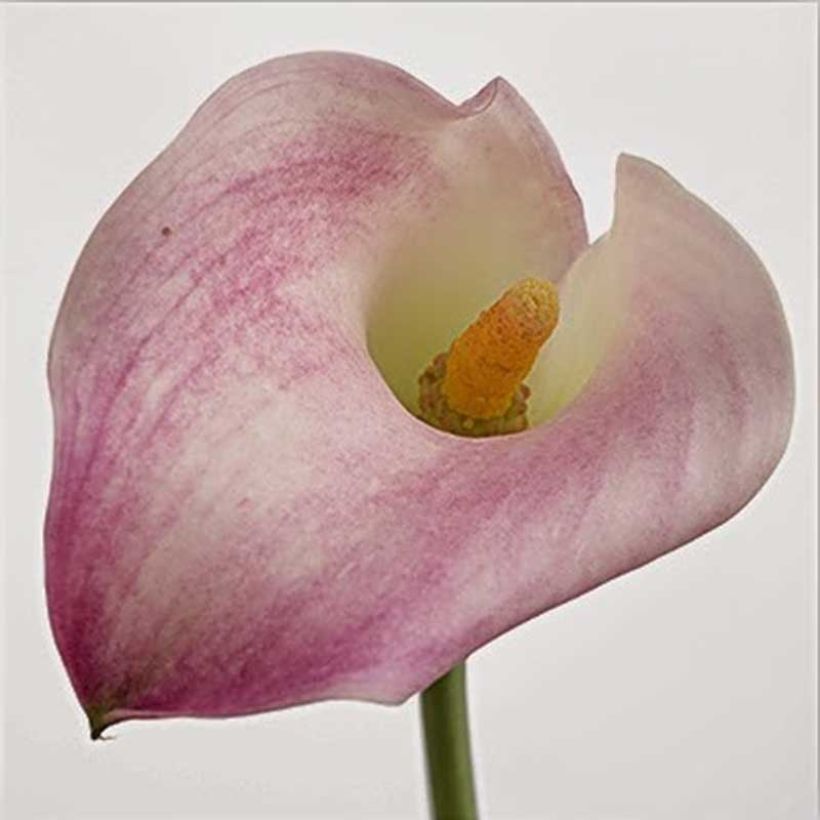



Plant habit
Flowering
Foliage
Botanical data
Zantedeschia
x elliottiana
Captain Marrero
Araceae
Golden Calla Lily, Yellow Calla Lily
Cultivar or hybrid
Other Arums
View all →Planting and care
Plant your 'Captain Marrero' Calla bulbs in March-April, at a depth of 12cm (5in), spaced 15cm (6in) apart, preferably in a moist location. Apply organic fertilizer at planting and at least once a year. They can also be grown in large pots, but make sure to water them regularly to keep the soil moist, and fertilize every 2 months during the growing season. Mulch them when the first cold weather arrives, and protect them with a bubble wrap cover, as they are not very hardy in the north. In pots, store them indoors during the winter. They will form beautiful flowering clumps from June to August in a few years. You can prune the foliage after the first frost.
Planting period
Intended location
Care
Planting & care advice
This item has not been reviewed yet - be the first to leave a review about it.
Similar products
Haven't found what you were looking for?
Hardiness is the lowest winter temperature a plant can endure without suffering serious damage or even dying. However, hardiness is affected by location (a sheltered area, such as a patio), protection (winter cover) and soil type (hardiness is improved by well-drained soil).

Photo Sharing Terms & Conditions
In order to encourage gardeners to interact and share their experiences, Promesse de fleurs offers various media enabling content to be uploaded onto its Site - in particular via the ‘Photo sharing’ module.
The User agrees to refrain from:
- Posting any content that is illegal, prejudicial, insulting, racist, inciteful to hatred, revisionist, contrary to public decency, that infringes on privacy or on the privacy rights of third parties, in particular the publicity rights of persons and goods, intellectual property rights, or the right to privacy.
- Submitting content on behalf of a third party;
- Impersonate the identity of a third party and/or publish any personal information about a third party;
In general, the User undertakes to refrain from any unethical behaviour.
All Content (in particular text, comments, files, images, photos, videos, creative works, etc.), which may be subject to property or intellectual property rights, image or other private rights, shall remain the property of the User, subject to the limited rights granted by the terms of the licence granted by Promesse de fleurs as stated below. Users are at liberty to publish or not to publish such Content on the Site, notably via the ‘Photo Sharing’ facility, and accept that this Content shall be made public and freely accessible, notably on the Internet.
Users further acknowledge, undertake to have ,and guarantee that they hold all necessary rights and permissions to publish such material on the Site, in particular with regard to the legislation in force pertaining to any privacy, property, intellectual property, image, or contractual rights, or rights of any other nature. By publishing such Content on the Site, Users acknowledge accepting full liability as publishers of the Content within the meaning of the law, and grant Promesse de fleurs, free of charge, an inclusive, worldwide licence for the said Content for the entire duration of its publication, including all reproduction, representation, up/downloading, displaying, performing, transmission, and storage rights.
Users also grant permission for their name to be linked to the Content and accept that this link may not always be made available.
By engaging in posting material, Users consent to their Content becoming automatically accessible on the Internet, in particular on other sites and/or blogs and/or web pages of the Promesse de fleurs site, including in particular social pages and the Promesse de fleurs catalogue.
Users may secure the removal of entrusted content free of charge by issuing a simple request via our contact form.
The flowering period indicated on our website applies to countries and regions located in USDA zone 8 (France, the United Kingdom, Ireland, the Netherlands, etc.)
It will vary according to where you live:
- In zones 9 to 10 (Italy, Spain, Greece, etc.), flowering will occur about 2 to 4 weeks earlier.
- In zones 6 to 7 (Germany, Poland, Slovenia, and lower mountainous regions), flowering will be delayed by 2 to 3 weeks.
- In zone 5 (Central Europe, Scandinavia), blooming will be delayed by 3 to 5 weeks.
In temperate climates, pruning of spring-flowering shrubs (forsythia, spireas, etc.) should be done just after flowering.
Pruning of summer-flowering shrubs (Indian Lilac, Perovskia, etc.) can be done in winter or spring.
In cold regions as well as with frost-sensitive plants, avoid pruning too early when severe frosts may still occur.
The planting period indicated on our website applies to countries and regions located in USDA zone 8 (France, United Kingdom, Ireland, Netherlands).
It will vary according to where you live:
- In Mediterranean zones (Marseille, Madrid, Milan, etc.), autumn and winter are the best planting periods.
- In continental zones (Strasbourg, Munich, Vienna, etc.), delay planting by 2 to 3 weeks in spring and bring it forward by 2 to 4 weeks in autumn.
- In mountainous regions (the Alps, Pyrenees, Carpathians, etc.), it is best to plant in late spring (May-June) or late summer (August-September).
The harvesting period indicated on our website applies to countries and regions in USDA zone 8 (France, England, Ireland, the Netherlands).
In colder areas (Scandinavia, Poland, Austria...) fruit and vegetable harvests are likely to be delayed by 3-4 weeks.
In warmer areas (Italy, Spain, Greece, etc.), harvesting will probably take place earlier, depending on weather conditions.
The sowing periods indicated on our website apply to countries and regions within USDA Zone 8 (France, UK, Ireland, Netherlands).
In colder areas (Scandinavia, Poland, Austria...), delay any outdoor sowing by 3-4 weeks, or sow under glass.
In warmer climes (Italy, Spain, Greece, etc.), bring outdoor sowing forward by a few weeks.

































